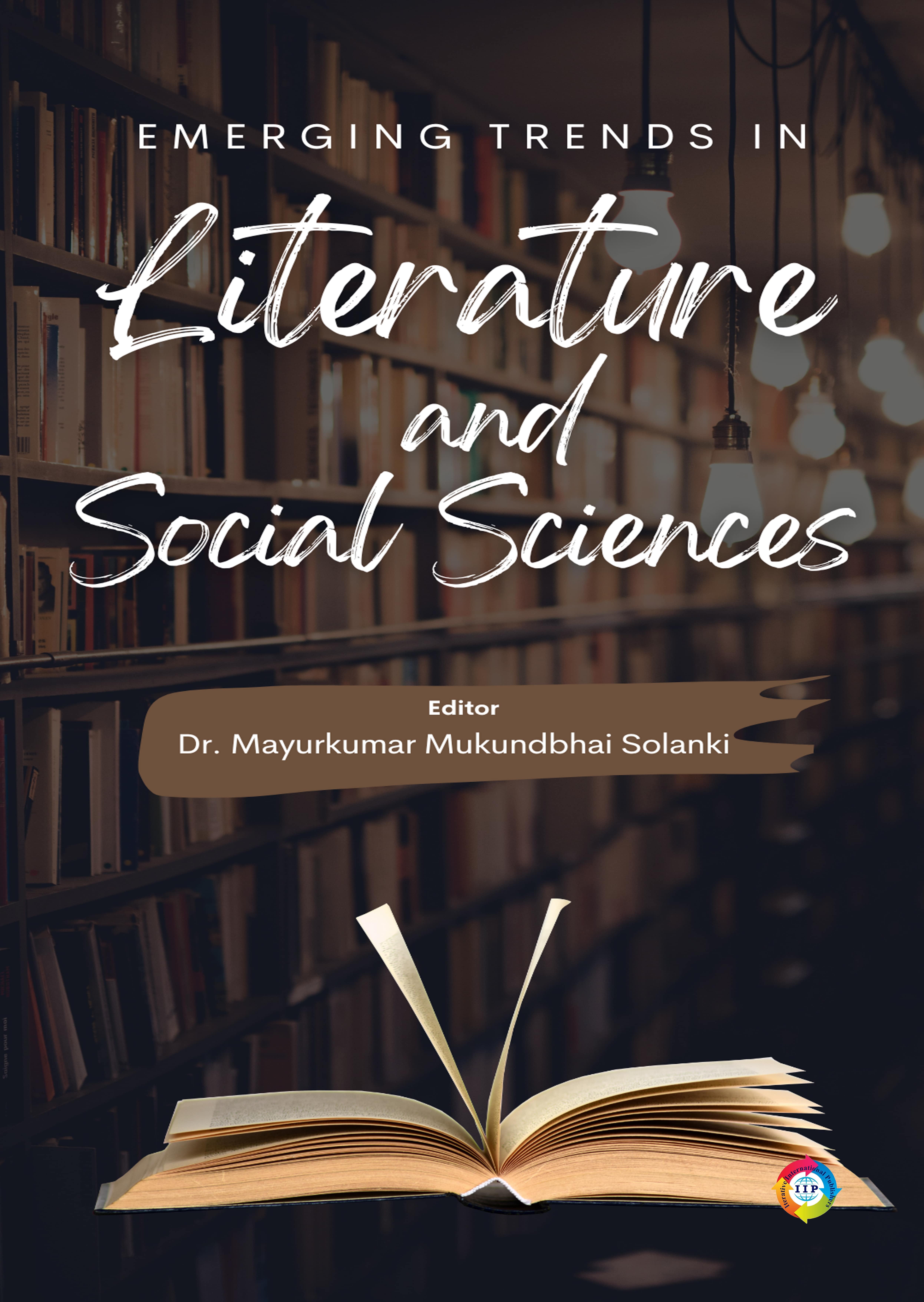
Emerging Trends in Literature and Social Sciences
Buy Nowe-ISBN : 978-93-6252-689-2
Publisher : Iterative International Publishers (IIP), Selfypage Developers Pvt Ltd.
Volume : 3-2024
AIM & SCOPE
Literary authors have produced considerable works during their lifetime and the eighteenth century marked the beginning of Indian English Literature. It is believed that literature is the mirror of society and a true picture of man’s consequences. Literature aims to teach and delight. Sometimes literature is used for propaganda and condemnation of vices. Literary authors have tried to awake the man’s soul by their writings. Literature is closely related to man’s life. As man faces good or bad consequences, his life never runs smoothly. Literary authors show man’s conflict during a particular period in their works. Greek tragedians accepted the role of destiny in man’s life and produced considerable tragedies in Greek literature. Shakespeare considered life as a tale told by an idiot in his tragedy Hamlet. He talksabout human weaknesses by presenting tragic heroes in his tragedies. We can find optimism and pessimism in literature. So far as Indian literature is concerned,Rabindranath Tagore paved the way with his works for the Indian authors. This book is the study of literary authors' writings in a new way. Social science is one ofthe branches of science, devoted for studying societies and the relationships among individuals within those societies. The term was formerly used to refer to thefield of sociology, the original "science of society", established in the 18th century. This book is divided into two sections. The first section is the study ofEmerging Trends in Literature which contains eight chapters of eminent professors and two research scholars. Each paper presents a new aspect of literary work.Dr. Manali Gadhavi talks about Contemplation of Religion Expressed in Modern Charani Literature and analyses the works of Pingalshi Narela and Dula Bhaya Kaag.Dr. Mayur Solanki draws the reader's attention to the theme of rebellion presented in Rabindranath Tagore’s Red Oleanders. Dr. Jayshri Desai has raised a questionfor the youth by discussing Kalidas’s Shakuntala. The quest for Enlightenment is very well explored by Prof. Palak Vyas in her paper. Dr.Janki Patel has addressedthe importance of Polyguruism briefly. Dr. Rahul Patel throws light on the female mythological characters. Dr. Surekha Patel has provided a complete analysis of Kavyakallolini with Sanskrit and English quotations. Relevance of Bhakti in Indian culture is discussed by Dr. Manjula Solanki. Alpesh Parmar, a research scholar, talks about the tragedy of Koral Dasgupta’s Draupadi. Naimish Joshi, a research scholar, talks about Amitav Ghosh’s Sea of Poppies. The second section of the book contains the eight chapters on Social Sciences. Prof. Abrar Khalak has discussed the advantages and disadvantages of NEP-2020 in his paper. Prof. Pushpa Garasiya explored the Advantages of Drumsticks. Prof. Kokila Patel talks about Consumer Rights and Duties. Dr. Mohmedhafiz Kathiyara talks about Mental Health of Drug Addicts And Non-Addicts with a detailed data analysis. Anemia Prevention in Pregnant and Adolescent Girls is discussed by Dr. Piyush Sinh. Prof. Manu Makwana discusses Challenges to History in the World. B. Siby has provided an Economic analysis of Health Indicators and the Gross Domestic Product of India. I express my gratitude to all the authors for their contribution of invaluable chapters for this book. I sincerely thank Mr. Jeevan, the series coordinator for his support during the publication process. I thank IIP for providing me an opportunity to publish the book as a solo editor.
SECTION 1
Chapter 1
CONTEMPLATION OF RELIGION EXPRESSED IN MODERN CHARANI LITERATURE (WITH SPECIAL REFERENCE TOPINGALSHI NARELA AND DULA BHAYA KAAG)
https://www.doi.org/10.58532/nbennuretlsch1
Chapter 2
RABINDRANATH TAGORE’S RED OLEANDERS: A THOUGHT PROVOKING PLAY
https://www.doi.org/10.58532/nbennuretlsch2
Chapter 3
KALIDAS’S SHAKUNTALA: A SOCIAL PERSPECTIVE
https://www.doi.org/10.58532/nbennuretlsch3
Chapter 4
HERMAN HESSE SIDDHARTHA: A TALE OF ENLIGHTENMENT
https://www.doi.org/10.58532/nbennuretlsch4
Chapter 5
TWENTY FOUR GURUS: POLYGURUISM
https://www.doi.org/10.58532/nbennuretlsch5
Chapter 6
REIMAGINING FEMALE ARCHETYPES: GENDER DYNAMICS IN MODERN INDIAN MYTHOLOGICAL LITERATURE
https://www.doi.org/10.58532/nbennuretlsch6
Chapter 7
ARAIYAR SRIRAMSHARMA’S 'KAVYAKALLOLINI' – A STUDY
https://www.doi.org/10.58532/nbennuretlsch7
Chapter 8
RELEVANCE OF BHAKTI IN INDIAN CULTURE
https://www.doi.org/10.58532/nbennuretlsch8
Chapter 9
USE OF MYTH IN KORAL DASGUPTA’S DRAUPADI
https://www.doi.org/10.58532/nbennuretlsch9
Chapter 10
AMITAV GHOSH’S SEA OF POPPIES: AN ANALYSIS FROM A HISTORICAL PERSPECTIVE
https://www.doi.org/10.58532/nbennuretlsch10
SECTION 2
Chapter 1
NATIONAL EDUCATION POLICY NEP 2020: BLESSING OR CURSE?
https://www.doi.org/10.58532/nbennuretlsch11
Chapter 2
CONTRIBUTION OF VEGETABLES IN AYURVEDA: ADVANTAGES OF DRUMSTICK
https://www.doi.org/10.58532/nbennuretlsch12
Chapter 3
CONSUMER AWARENESS: CONSUMER RIGHTS AND DUTIES
https://www.doi.org/10.58532/nbennuretlsch13
Chapter 4
MENTAL HEALTH OF DRUG ADDICTS AND NON ADDICTS
https://www.doi.org/10.58532/nbennuretlsch14
Chapter 5
ANEMIA PREVENTION IN PREGNANT AND ADOLESCENT GIRLS THROUGH THE USE OF IRON UTENSILS AND PROMOTION OF KITCHEN GARDEN
https://www.doi.org/10.58532/nbennuretlsch15
Chapter 6
CHALLENGES TO HISTORY IN WORLD
https://www.doi.org/10.58532/nbennuretlsch16
Chapter 7
AN ECONOMIC ANALYSIS ON HEALTH INDICATORS AND GROSS DOMESTIC PRODUCT OF INDIA
https://www.doi.org/10.58532/nbennuretlsch17
Chapter 8
RECENT TRENDS IN SOCIAL SCIENCES: A CRITICAL STUDY
https://www.doi.org/10.58532/nbennuretlsch18
EDITORIAL BOARD MEMBERS
Dr. Mayurkumar Mukundbhai Solanki
Assistant Professor
Department of English,
Shri S. K. Shah and Shri Krishna
O.M. Arts College, Modasa.
